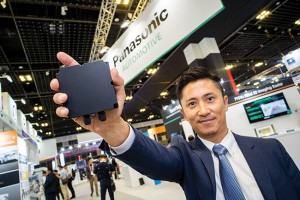Panasonic 3D imaging cuts through
First published at ITS World Congress - October 23, 2019
Panasonic is using the 2019 ITS World Congress to highlight its 79 GHz band 3D imaging radar, capable of identifying cars, cyclists and pedestrians even in bad weather.
Conventional millimetre-wave radars detect objects only two-dimensionally – in horizontal and vertical angles – making it difficult to determine the shapes of objects.
However, Panasonic applie
s an unequally spaced antenna layout design and MIMO signal processing technique, using the 79 GHz band, in a virtual array that can achieve high resolution in both horizontal and vertical directions.
It provides highly accurate three-dimensional detection with a vertical angle in addition to range and a horizontal angle, while using an equivalent number of antennas to conventional 2D radar.
Objects can be detected at more than 30m even at night or under poor weather conditions, where recognition is difficult using conventional optical sensors such as cameras and lidar.
In the future, 79 GHz band 3D imaging radar technology is expected to be used as an automotive radar capable of recognising obstacles around a vehicle, as well as an infrastructure radar that can monitor intersection traffic – and a major step towards realising an autonomous vehicle society. Visitors to Panasonic’s stand can also see its 60 GHz WiFi instant connectivity capability, able to visualise blind spots at intersections and road bends. It achieves this by instantaneously sharing automotive data and sensor data within the road infrastructure.
Also on display is the company’s mobile battery sharing service.
Booth 179
Companies in this article
Panasonic












